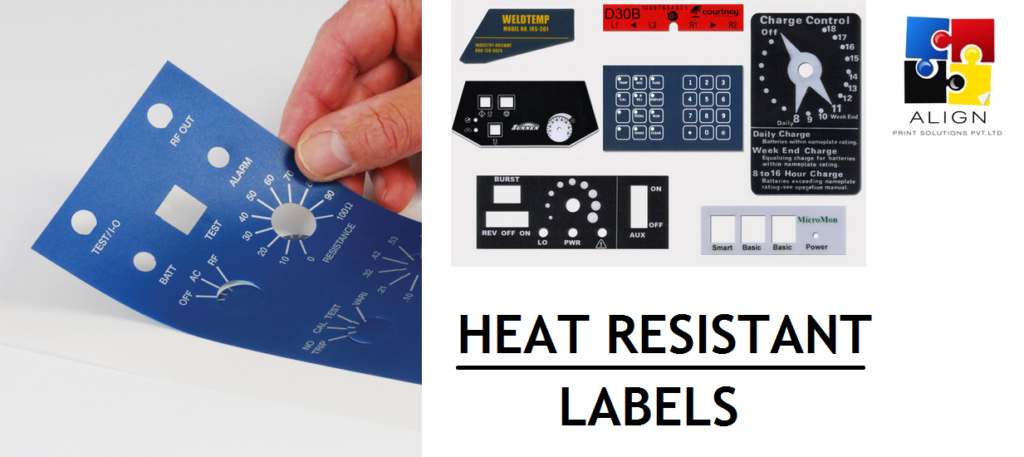Contact Numbers
Consumables /
Labels

Heat-resistant / high temperature labels are specifically designed to withstand high temperatures without losing their adhesive properties, readability, or structural integrity. These labels are used in environments where exposure to elevated temperatures is common, such as industrial settings, manufacturing processes, automotive applications, or certain types of equipment.
The characteristics of heat-resistant labels include:
Temperature Threshold: These labels are engineered to withstand specific temperature ranges, often ranging from moderate heat to extreme temperatures, depending on the material used.
Adhesive Strength: The adhesive used in these labels remains stable and doesn’t degrade or melt under heat, ensuring that the label stays affixed to the surface.
Material Durability: Heat-resistant labels are typically made from materials that can withstand heat without degrading, warping, smudging, or losing legibility. Materials like polyester, polyimide, or specialty heat-resistant papers are commonly used.
These labels find applications in industries such as manufacturing, automotive, aerospace, and electronics, where exposure to high temperatures during production, processing, or operation is frequent. They are essential for labeling components, products, or parts that experience heat stress without compromising the integrity of the label or the information it carries.
High temperature labels are designed to withstand elevated temperatures without losing adhesion or readability. They are commonly used in industries such as manufacturing, automotive, aerospace, and electronics where exposure to high heat is prevalent.
High temperature labels can withstand a range of temperatures, depending on the materials and adhesives used. Some labels can withstand temperatures as high as 1000°F (538°C), while others may have lower thresholds. It’s essential to choose labels rated for the specific temperature conditions in your application.
High temperature labels are often made of durable materials such as polyester, polyimide (Kapton), ceramic, or aluminum. These materials can endure extreme heat without melting, fading, or deteriorating.
While high temperature labels are designed to withstand heat, their suitability for outdoor use depends on additional factors such as UV resistance and weatherproofing. Some high temperature labels are designed for outdoor applications, but it’s essential to verify their specifications with the manufacturer.
Yes, high temperature labels can often be customized to meet specific requirements, including size, shape, color, and content. Customization options may vary depending on the manufacturer and the materials used.
High temperature labels should be applied to clean, dry surfaces for optimal adhesion. It’s essential to follow the manufacturer’s instructions for application carefully, including any recommended surface preparation techniques.
Many high temperature labels are designed to be resistant to chemicals and solvents, but the level of resistance can vary depending on the materials used. It’s advisable to consult with the manufacturer to ensure that the labels meet your specific chemical resistance requirements.
Some high temperature labels are designed to be removable without leaving adhesive residue behind, while others may bond more strongly to the surface. If residue-free removal is essential for your application, it’s essential to select labels specifically labeled as “removable” or consult with the manufacturer for recommendations.
Many high temperature labels are compatible with thermal transfer printing, allowing for the printing of variable data such as barcodes, serial numbers, and text. However, it’s crucial to ensure that the label material is suitable for thermal transfer printing and that the printer settings are adjusted accordingly.
When selecting high temperature labels, consider factors such as the temperature range of your application, the surface to which the labels will be applied, the durability required, any chemical exposure, and any regulatory or compliance requirements specific to your industry. Consulting with a knowledgeable supplier or manufacturer can help ensure that you choose the right labels for your needs.